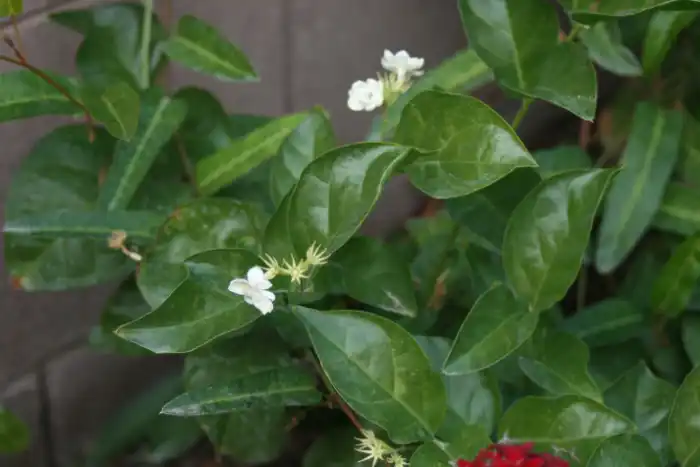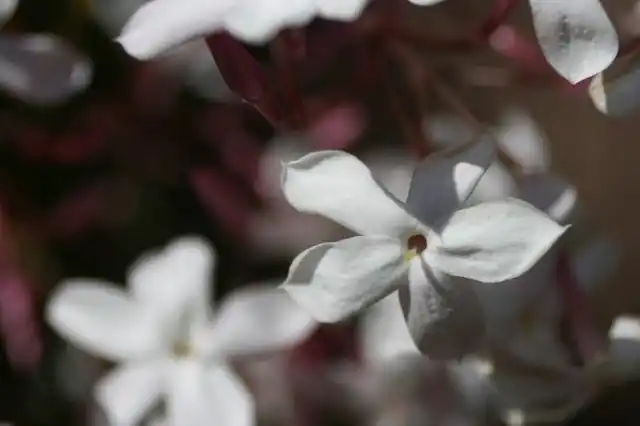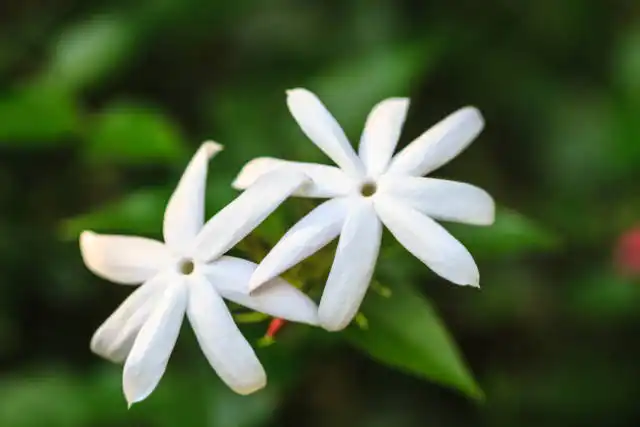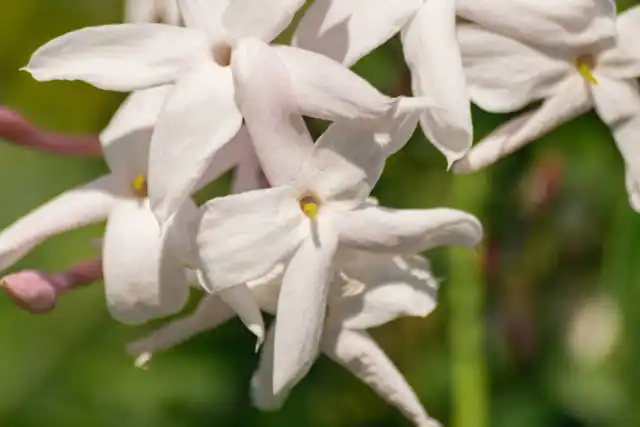Are you looking to create a fragrant garden? With its heavily scented flowers and fast-growing vines, Jasmine is the perfect addition to any Phoenix landscape. Plus, it’s surprisingly easy to grow, even in the desert’s challenging conditions.
This post may contain affiliate links. Please read our disclosure policies.
Everything You Need to Know to Grow Jasmine in Phoenix
Here’s everything you need to know to grow, care for, and enjoy this delightful vine in your garden.
Grow Jasmine: Types of Jasmine
Common Jasmine, Jasminum officinale, is the most well-known jasmine variety. It’s loved for its sweet, intoxicating white flowers.
Arabian Jasmine, Jasminum sambac, is known for its small, waxy, and highly fragrant white flowers. This vine is evergreen keeping its leaves year round.
Pink Jasmine, Jasminum Polyanthum, grows extremely fast and produces pink buds that open into white flowers.
Star Jasmine, Trachelospermum jasminoides, is not a true jasmine and is not in the same family. It produces small, white, star-shaped flowers and is beautiful climbing a trellis. Despite it not being a true Jasmine, Star Jasmine has a similar fragrance. It may also be referred to as Confederate Jasmine.
Winter Jasmine, Jasminum nudiflorum, is unique in that it blooms in late winter. Unlike the other types of Jasmine, Winter Jasmine has unscented yellow flowers. The vine is deciduous.

Looking for more vine inspirations? Check out our blog post on Fast Growing Flowering Vines to Add Color and Privacy.
When & Where to Plant Jasmine
Timing and placement are everything when it comes to gardening in the desert. Jasmine thrives when planted in spring or fall, giving it time to establish roots before the intense summer heat or chilly winter.
Choose a spot in your yard with morning sun and afternoon shade—perfect for protecting the plant’s delicate leaves from sunburn. The east side of your home is an excellent choice.
How to Plant & Care for Jasmine
Jasmine vines like to be kept moist, especially during their first growing season. Water them deeply once a week, more often in hot, dry weather
Jasmine plants prefer well-draining soil that is rich in organic matter. They thrive in loamy soil.
It can tolerate Phoenix desert soil, however good drainage is crucial for this vine. Jasmine prefers a slightly acidic to neutral pH range of 6.0 to 7.0.
Water and Sunlight Requirements:
Water Jasmine regularly and deeply during the spring and summer. Reduce water during the winter months.
Jasmine likes 4-6 hours of direct sunlight daily, but in Phoenix it appreciates afternoon shade or the leaves tend to get sunburned.
Plant in an area of your yard that gets morning or early afternoon sun and shade from the afternoon sun. We planted Jasmine on the east side of our home where it receives plenty of morning sun.

Support for Vine
Jasmine vines are natural climbers and they’ll thrive with a bit of support. A trellis, arbor, or even a sturdy fence can provide the perfect structure for them to climb. If you want a more controlled look, you can also train them along a wall with the help of garden twine or wire.
When does Jasmine bloom?
Jasmine typically blooms during the warmer months, primarily in late spring and early summer. In gardening zone 9b, the buds on my Pink Jasmine vine start appearing in February and will flower by late February.
Jasmine Attracts Pollinators:
The sweet fragrance of jasmine flowers attract bees. You may also see butterflies and hummingbirds visit this vine.
Why isn’t my Jasmine flowering?
If Jasmine doesn’t receive enough sun the plant will get leggy and you’ll see fewer flowers.
How does Jasmine Climb?
Star jasmine is a twining vine. Provide supports such as a trellis, arbor or pole.

How fast does Jasmine Grow?
Jasmine is fast growing. It can grow one to three feet per year. At maturity, Pink Jasmine vine will reach 20 feet. This is a great plant to use over an arbor.
Star Jasmine is Native to Asia, this plant grows well in Phoenix. Our plant receives mid morning sun and afternoon shade and is thriving. It can be trained as a bush or a vine. At maturity Star Jasmine can twine up to 20 feet.
If you’re looking for a Jasmine that takes less space choose Arabian Jasmine. Depending on the variety this Jasmine will reach heights of 6-12 feet.
Companion Plants for Jasmine
Companion planting can enhance the beauty and health of your jasmine vine. Plant these gorgeous companion plants near Jasmine.
- Lavender complements jasmine with its purple blooms and also repels pests.
- Roses create a classic, romantic garden pairing.
- Clematis is another climber that can share the same trellis and provide contrasting blooms.
- Marigolds’ bright flowers attract beneficial insects and deter pests.
Is the Vine Drought Tolerant?
Yes, once established Jasmine is drought tolerant.
When does Jasmine Bloom?
Depending on the variety of Jasmine, it usually blooms from spring through fall in Phoenix.

